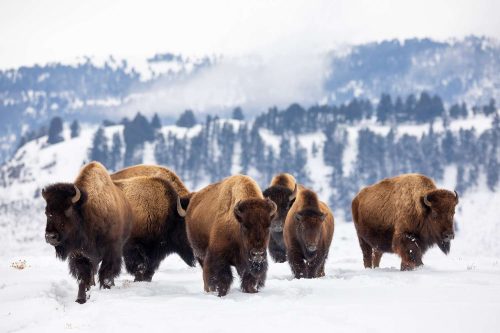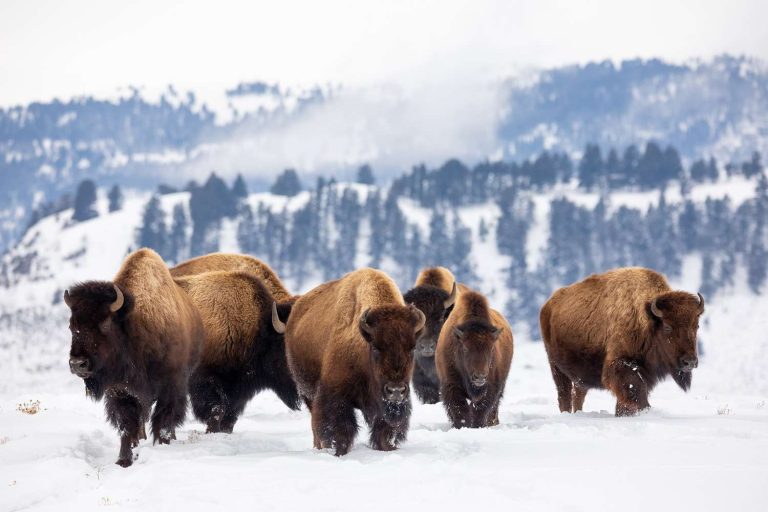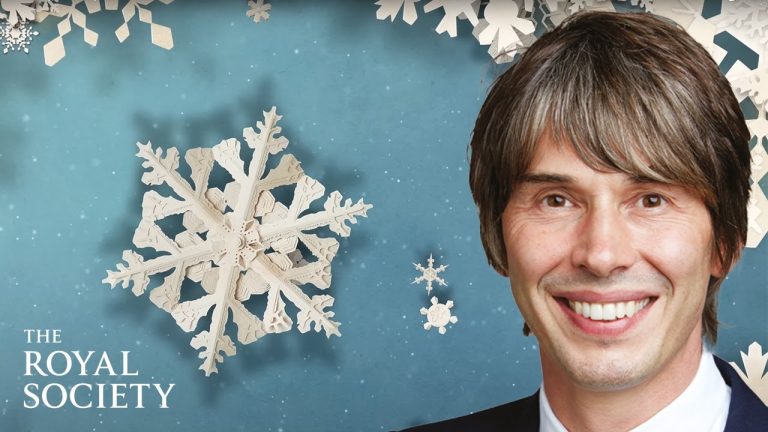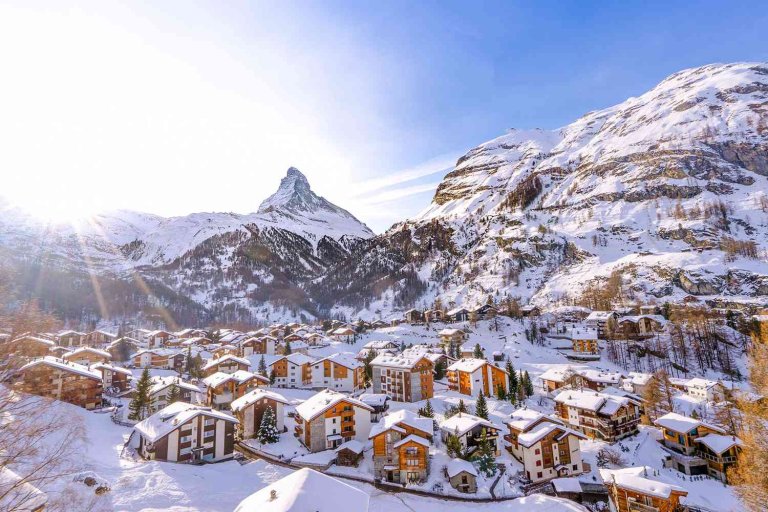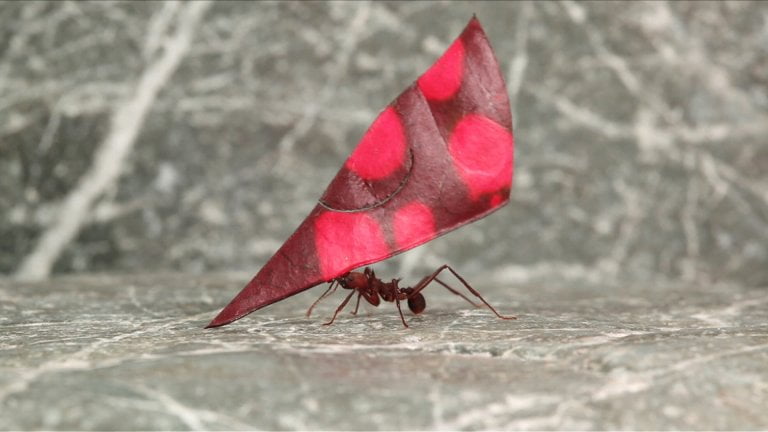From towering mountains to gravel and pebbles along a river, Earth’s solid exterior is made of a huge variety of rocks. Some are even being formed this very moment as active volcanoes spew lava that hardens as it hits the atmosphere or ocean.
But most of the Earth’s rocks are extremely old. Each rock is a shapeshifter, changing form over time with a history that can span millions of years. And here’s what geologists and rock climbers and your aunt with a collection of heart-shaped rocks know that lots of us overlook: one rock is not just like any other.
How Do Rocks Form?
Way back 4.5 billion years ago, when the solar system was forming, the Earth solidified as a swirling nebula of dust and gas that collapsed under its gravity. Then as gravity kept pulling on different molecules, the Earth formed its spheroid shape made up of different shell layers.
Even though we sometimes think of it as being separate from the Earth, the atmosphere is really the first and lightest shell with its own set of layers.
Things start to feel more solid at the bottom of the atmosphere, and we hit Earth’s crust.
Compared to the rest of the planet, the crust is extremely thin and has a low density, which is how tightly packed the molecules make up something. Particles in the original gas and dust that ended up in the Earth’s crust became the minerals or inorganic, naturally occurring chemical compounds with a crystalline structure and rocks, solid collections of minerals, that we find on the planet today.
There are actually two types of crust on Earth: Continental crust and oceanic crust.
Continental crust makes up the major landmasses on Earth that are exposed to the atmosphere. It’s made of light-colored and lightweight rocks rich in silicon and aluminum, which help make it the least dense layer besides the atmosphere but not the thinnest. That would be the oceanic crust, which forms the vast ocean floors.
Oceanic crust is made of heavy, dark-colored, iron-rich rocks with a lot of silicon and magnesium. It’s denser than the continental crust but only a few kilometers thick.
Beneath the crust is the much thicker mantle.
It stretches for roughly 2900 kilometers and is rich in elements like iron, magnesium compounds, and combinations of silicon and oxygen called silicates. The mantle is so thick it gradually changes density as we go deeper into the Earth. The lower mantle is closer to the center, where pressure is denser as everything is pushed together more.
The last layer in our journey to the center of the Earth is the core made of iron and nickel.
The 2,400-kilometer thick outer core is so hot that iron becomes molten and turns to liquid. But the hot, dense inner core of iron with a radius of 960 kilometers is always solid because of the tremendous pressure.
No one has been to the center of the Earth, but scientists study how seismic waves from earthquakes travel through the planet to model the Earth’s interior. And learning about what Earth is like on the inside helps us learn about earthquakes, volcanic eruptions, how continents formed, and even about the origin of the planet itself. Some of the elements show up a lot, but each layer has a distinct chemical composition and temperature, and each one in its way helps give us the rocks and landforms we see on the surface.
Like here, high in the Himalayas, where a large chunk of granite is newly exposed on the surface. During the day, its grains glint in the Sun, and as night falls, the rock blends into the darkness. An occasional goat clambers on its rounded dome, searching for a tuft of grass. It seems innocuous enough, but seeing granite here means that volcanic activity was transforming the surface at some point in time, eons ago.
Magma
Within the Earth’s crust and beneath the surface is magma, or molten rock, that can cool and solidify into igneous rock. Igneous rocks make up about 90 percent of the Earth’s crust, though you might not notice because they’re often covered by other types of rocks, soil, or the ocean.
We actually end up with different igneous rocks depending on whether magma cools above or below Earth’s surface. When magma cools and solidifies beneath the Earth’s surface forms intrusive igneous rock. And granite is intrusive igneous rock. But when magma erupts onto the surface, we call it lava, and after it cools and solidifies, it becomes extrusive igneous rock. There aren’t any volcanoes in the Himalayas, but 60 million years ago, in the initial Himalayan mountain building phase, volcanic activity like magma churning beneath the surface would’ve been common.
From measuring the magnetism of rocks, dating plant and animal fossils in the rock, and studying the changes in how land moves, we know the Himalayan mountain ranges formed when the Indian and Eurasian plates, or chunks of the crust floating independently over the mantle, collided — and this process continues today.
Around 60 million years ago, the Indian plate was about 6,400 kilometers south of the Eurasian plate.
An ancient ocean called the Tethys Sea was dragged down beneath the Eurasian plate into the Earth’s interior as it moved north. The oceanic crust and all the tiny sediment particles that used to be on the sea’s shore were also dragged down where they melted into magma. Eventually, the magma moved into cracks and fissures deep inside the Earth, which solidified into our granite!
If we brush off some of the dirt and grass, we can better look at our rock and its texture. Rocks contain minerals that form crystals when molecules or atoms are arranged in a regular repeating pattern. How fast magma cools affects crystallization and the texture of a rock. Intrusive rocks like granite cool slowly, so they have more time for larger mineral crystals to form, which is why granite looks coarse-grained, and we can even see the crystals without a microscope.
Magma can also occur at different depths within the crust and mantle, which means it’s exposed to different temperature and pressure conditions. Heavier minerals deeper down will crystallize first and be denser and darker, while minerals that form closer to the surface are less dense and lighter in color.
Our granite is felsic.
Felsic is rich in light-colored, lighter-weight minerals, especially silicon and aluminum, and the magma it came from was closer to the surface. On the other hand, lava cools very quickly when it hits Earth’s surface, which limits how crystals grow. Extrusive rocks like basalt end up with small, individual minerals and a fine-grained texture that looks much more seamless. And basalt is mafic, which means it’s rich in darker, heavier minerals like magnesium and iron compounds.
Even though it formed from lava on the surface, the original magma was deep in the Earth’s crust or mantle. Yet somehow, our chunk of granite made its way to the surface. Like maybe it was uplifted as the Indian plate pushed further north and as the Himalayas rose.
At the surface, rocks have to deal with different temperatures and pressures than where they formed deep within the crust. Not to mention weathering and erosion or being broken down by the Earth’s atmosphere, water, and living things. With its ability to dissolve practically anything, water can especially alter, disintegrate, and decompose rocks, and the pieces can then be picked up and deposited elsewhere.
A New Surface Environment
So once the extra rocks and soil are removed by weathering and erosion, our granite is exposed to a new surface environment. And it might seem like the granite outcrop is just sitting there doing nothing. But unseen processes are operating. Like the pressure is different out here on the surface, so the outer few centimeters of the rock might expand outward and crack. Then the loose outer layers of rock can slough off, like a snake shedding its skin. Or temperature differences can also cause the rock to expand or contract.
This leads to granular disintegration, or when individual mineral grains break free from a rock. This is how thousands or millions of years of tons of little rock dust accumulated around the base of this granite boulder. So as clouds gather over the mountain top and a steady rain begins, the little mineral grains can get washed into a stream and may eventually be dropped along the channel banks during a flood. Or they’ll bounce along with the water and travel to where the river empties into the sea, and the grains become part of the ocean bottom.
Sediments
Grains like these are sediments. Centuries of monsoons and soil erosion have blanketed the floor of the Bay of Bengal in up to 20 kilometers of sediment from the Himalayas. So part of our granite boulder is actually lying on the bottom of the ocean. If we could slice into all the sediment lying on the floor of the Bay of Bengal, we’d likely see horizontal layers or strata from different times when large amounts of sediments were deposited.
Over time, the pressure from the weight of the material above compacts cement and transforms the sediments into sedimentary rock, which still shows some of the original layers. A sedimentary rock like sandstone is made of cemented sand-sized particles of quartz and other minerals. It has very visible grains, lots of tiny little holes and is resistant to weathering.
Other sedimentary rocks like limestone are formed when the remains of organisms like shellfish, corals, and plankton sink to the ocean floor. Coal is another one of these organic sedimentary rocks that’s created when organic matter accumulates and compacts in swampy environments over millions of years.
At the bottom of the ancient Tethys Sea, which disappeared about 20 million years ago, sedimentary rocks would have formed from sediments brought down by rivers. But as the Indian plate pushed northward, the gap between the Indian Plate and the Eurasian plate narrowed. As the plates collided and the Himalayas formed, the sediment on the seafloor was compressed and crumpled.
On top of being squished and crumpled, the rocks also have to go through intense temperature and pressure changes. This action causes the existing rock to go through metamorphism and change into a completely new rock type. All the minerals from the original rock recrystallize without melting down into the molten rock.
The new metamorphic rocks are typically harder, more compact, and are more resistant to weathering. So if any sediment from our chunk of granite got caught up as the Tethys Sea was sucked under, it would probably change into gneiss.
Gneiss
Gneiss has alternate light and dark minerals bands and can form from various rocks. It’s also very hard and resistant to weathering and erosion. So our granite boulder started life as igneous rock. But as pieces broke off, they could’ve been compacted into sedimentary rock or changed into metamorphic rock.
It seems like it’s sat there for all of the time, but rocks like our chunk of granite are continuously altered over millions of years from one rock type to another as part of the rock cycle. But the story of our granite is not the story of all rocks. There are many pathways through the cycle. Like igneous rocks could skip sedimentary rocks and go directly to metamorphic rock. Or even re-melt and recrystallize to make new igneous rock.
Whether scaling a 3,000 ft high granite monolith or kicking a pebble down the road, each piece of rock has a story that may be millions of years old, etched in the stone by processes both on the surface and deep within the Earth.
If you enjoyed this article, you should read, “Why Scientists Fall for Precariously Balanced Rocks?”


